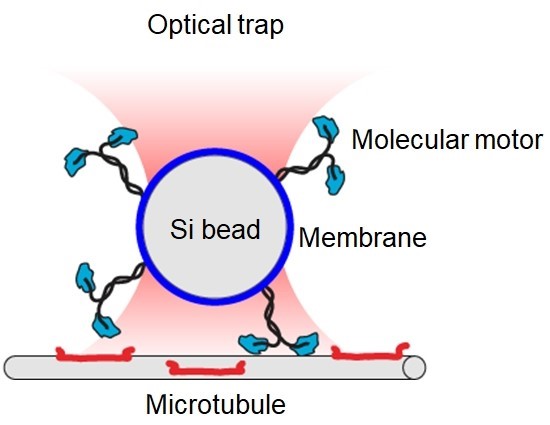Writing in the Proceedings of the National Academy of Sciences, graduate students Qiaochu Li and John Wilson, undergraduate student Luis Arteaga-Castaneda, and professor Jing Xu investigate a biological analog of the many-body problem composed of cholesterol, lipid membrane, and protein nanomachines.
In this paper, graduate student Qiaochu Li employed a biomimetic lipid membrane to couple molecular motors, cholesterol to tune the diffusion coefficient of molecular motors in the lipid membrane, and optical trap to experimentally determine the group function of membrane-coupled molecular motors. Graduate student John Wilson employed stochastic simulations for mechanistic investigations. Undergraduate student Luis Arteaga-Castaneda employed fluorescence measurements for lipid membrane characterization.
Findings establish a direct link between cholesterol in the lipid membrane and the group function of membrane-bound motors. We propose that reduction in kinesin diffusion in the cargo membrane underlies the observed effect. We provide a simple analytical model to explain this proposed mechanism. Findings may more broadly extend to other alterations that impact motor diffusion in the membrane, including those associated with aging and neurological diseases.


